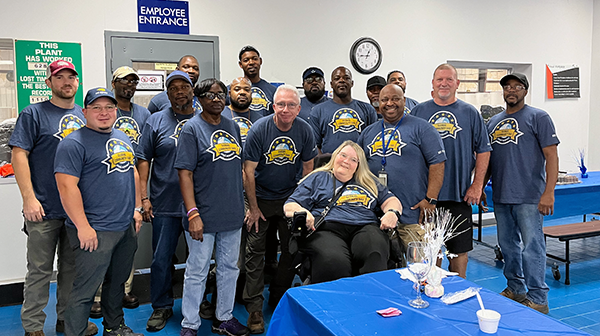Our innovative filter media recycling process has won the FILTREX™ 2025 Innovation Award! That’s big news for us but more importantly, we’ve taken a big step toward solving a major challenge: what to do with post-industrial glass microfiber filtration media waste. We’ve developed a way to give it a second life by recycling it into durable products. So, this award is a win for sustainability, and a sign of what’s possible when we rethink waste.
The Challenge: Where Does Post-Industrial Filtration Media Waste Go?
Manufacturing filtration media generates production waste - scraps, trim waste, and out-of-spec materials - that traditionally had no easy path for recycling. But still, these materials contain valuable glass microfiber and PET, that shouldn’t go to waste. We knew there had to be a better way to reclaim and reuse them.
The Solution: Turning Waste into Opportunity
Rather than treating this material as garbage, we asked: What if we could turn it into something new? With our partners at PureLoop GmbH (Austria), we developed a groundbreaking recycling process that:
▶️ Collects post-industrial filtration waste from our production.
▶️ Compounds it with recycled PET (rPET) or ABS polymers to create pellets.
▶️ Uses these pellets for injection molding, transforming them into durable components, such as putty knives and tile spacers for JM’s GoBoard® tile backer business and other non-structural molded parts.

Proven Results at an Industrial Scale
This concept has been successfully demonstrated on an industrial scale, highlighting its incredible potential and effectiveness. In partnership with PureLoop, our trials achieved an initial throughput of 300 kg/hour, proving that:
✔️ The waste material can be directly fed into a twin-screw compounding system.
✔️ The resulting pellets contain ~30% glass fiber, enhancing mechanical properties.
✔️ Minimal pre-processing is required, making the process cost-effective and efficient.
Mechanical testing at our Technical Center in Littleton, CO (USA) confirmed that the material exhibits reinforcing behavior due to the glass fibers.

Why This Matters: The Impact on the Environment
This innovation goes beyond waste reduction, offering significant environmental and economic advantages:
🌍 Landfill Avoidance – At least 50% of the material in our compounded pellets comes from diverted filtration media scrap.
💰 Lower Costs, Higher Performance – Compared to 100% rPET, our approach reduces material costs by up to 50% while enhancing mechanical properties compared to unreinforced polymers.
♻️ CO₂ Reduction & Further Recyclability – Using recycled filtration media instead of virgin PET significantly lowers CO₂ emissions. Our compounded pellets remain thermoplastic, meaning they can be recycled again, extending their lifecycle even further.
🚀 Scalability & Future Applications – Our current trials demonstrate feasibility, and we’re exploring ways to expand this process further. This includes potentially recycling end-of-life HVAC filters – including their frames – in the future.

What’s Next?
Winning the FILTREX™ Innovation Award is a milestone, but this is just the beginning. We’re committed to pushing this technology and driving sustainability in filtration media manufacturing. A massive thank you to our incredible team, partners, and everyone who voted for us at FILTREX™ 2025. Together, we’re making filtration even more sustainable.
Want to learn more? Let’s talk!
-
Engineered Products
-
Engineered Products
-
Engineered Products
-
Engineered ProductsHow to Solve Industrial Filtration Challenges with Evalith® Micro Fiberglass Filter Tube Media
-
Engineered Products











